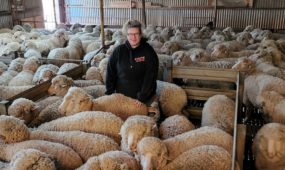Australian lentil crop doubles previous record
Primary Industries
AUSTRALIA is strengthening its position as a major exporter of lentils following a bumper crop.

Sign up to receive notifications about new stories in this category.
Thank you for subscribing to story notifications.
Latest figures from the Australian Bureau of Agricultural and Resource Economics and Sciences (ABARES) show lentil farmers Down Under harvested a record 620,000 MT of mainly red lentils late last year, double the previous record of 310,000 MT set in 2010.
The majority of the crop was grown in South Australia (420,000MT), which increased its yield to 2.95MT per hectare in 2016/17 from 1.58MT per hectare in 2015/16 thanks to excellent winter rainfall.
The record result was also helped by an 11 per cent increase in hectares planted in South Australia and Victoria, the only lentil-producing states, to 253,000 ha.
Australia is now among the biggest producers of the soup-and-curry pulse behind India, the biggest lentil consumer, and Canada. More than 90 per cent of Australia’s lentils are exported to countries including India, Bangladesh, Sri Lanka and Egypt.
Pulse Australia CEO Nick Goddard said high global prices in recent years driven by poor seasons in India and low wheat and barley prices had convinced more Australian farmers to plant lentils.
He said although prices had fallen from the recent spikes of more than AU$1000 a tonne in 2015 they remained above long-term averages.
“They are still an attractive proposition for growers in Australia relative to wheat and barley,” Goddard said.
“Last season was certainly a record in Australia by a long shot … the extra rain had a very positive affect in almost doubling the yield.”
South Australia is well suited for growing larger red lentil varieties that are proving popular in India and Sri Lanka.
“We compete head-on with Canada on the medium size but there’s a large variety called Jumbo we produce that really does have a strong place in the market over there,” Goddard said.
Farmers in Australia are also turning to pulses as a means of improving soils while rotating fields away from traditional cereal plantings.
The United Nations declared 2016 as the International Year of Pulses sparking a campaign to increase domestic consumption, including the launch of Australia’s first lentil beer.
Australian lentils are harvested and processed in November and December, taking advantage of a window between the Canadian (August/September) and Indian (March/April) harvests.
AGT Foods Australia is a leader in value-add processing of pulses.
CEO Peter Wilson said although prices had stabilised to about AU$650 a tonne, they were at a level where they were trading internationally, which was “a good thing”.
“The great thing about red lentils is that they have fairly broad and deep markets around the world,” he said.
“The red lentils are relatively stable at the moment. We’ve got to be striving for really good quality all the time so we encourage farmers to continue to invest in the product to ensure we can position it to the highest paying market.
“I think we’ll continue to see good growth based on profit – farmers are going to plant things that are going to make them money, that’s the bottom line.”
Jump to next article



